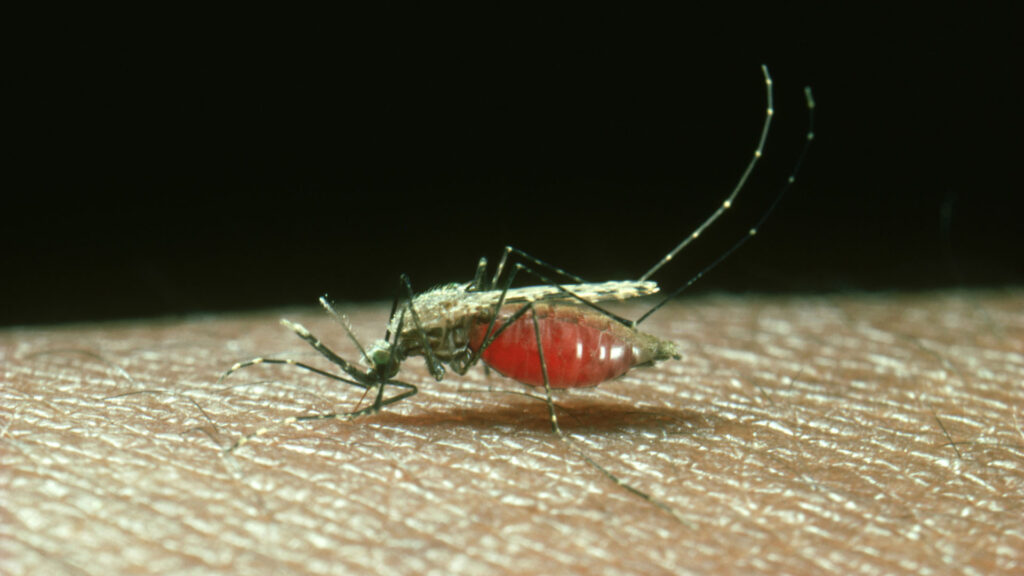What is malaria?
Malaria is a serious and sometimes fatal disease caused by specific parasites that infect mosquitoes. Malaria is contracted by the bite of an infected female Anopheles mosquito which is the only mosquito type that can spread the disease.1
Malaria is not new to the United States and was endemic (regularly occurring in an area or community, i.e., the flu) to the country before 1949 with the South experiencing the most spread of the disease. The US was declared malaria free after DDT, an insecticide, was applied in counties of which malaria was common with application beginning in 1947.2
Current cases in Texas
This year (2023), one confirmed case of locally acquired malaria has been diagnosed in Cameron County with the last known locally acquired case in Texas recorded in 1994. Locally acquired means that the individual did not contract malaria during travel. This Texas resident did not travel outside of the state or country before getting malaria. They have received treatment and are improving.3
Locally acquired malaria cases can occur when an Anopheles mosquito bites a traveler who is infected and then bites someone else. Malaria is not contagious like the flu, meaning that it cannot be spread from person to person through casual (i.e., sitting next to them) and/or prolonged contact (i.e., sexual transmission).4, 5
In general, almost all cases of malaria in the United States are travel related, with Texas averaging 120 travel-related cases per year.3
Signs and symptoms
Malaria can range from uncomplicated to severe and can most often be cured if diagnosed and treated correctly and as soon as possible. The period of time before symptoms start can range from 7-30 days. This period of time is referred to as the “incubation period”.
Symptoms of malaria can include a combination of:
- Fever
- Sweats
- Chills
- Headache
- Nausea and vomiting
- Body aches
- Feeling uncomfortable (known as “malaise”)
- Lack of healthy red blood cells (known as “anemia”)
- Yellowing of skin and eyes (known as “jaundice”)
If you experience these symptoms, contact your healthcare provider for potential diagnosis and treatment. The surest way to know if you have malaria is by looking at your blood under a microscope to see if a Plasmodium parasite is seen in the sample.6
Risk for infection
Anyone can get malaria, but some groups are more at risk for serious illness or death if unable to get proper treatment. Individuals traveling from a country without malaria to a country with malaria, children, pregnant people, and those living in rural areas are at higher risk.5
Currently, the risk for being infected by malaria in Texas is low, but can increase with certain behaviors (i.e., travel) and if more locally acquired cases are identified. AgriLife Extension will continue to work with state health entities to communicate updates as available.
Protect yourself and your family!
You can protect yourself, family, and friends by preventing mosquito breeding and bites.
Prevent mosquito breeding by:
- Clearing standing water when able, including in trash cans, tires, buckets, etc.
- Using mosquito larvicide for water that can’t be emptied or covered.
- Keeping rain gutters clear of debris and standing water.
- Keeping backyard pools and hot tubs properly chlorinated and free of debris.
- Frequently changing the water in dishes for animals.
Prevent mosquito bites by:
- Using insect repellents registered with the Environmental Protection Agency (EPA).
- Cover up with long sleeves and long pants when outdoors.
- Keep mosquitos out of your home by keeping doors and windows closed and installing window screens if able.
Be proactive and prevent mosquito breeding and bites. Mosquitos can live indoors and outdoors, as well as bite during the day and night.7
1. Centers for Disease Control and Prevention. (2022, February 2). About malaria. https://www.cdc.gov/malaria/about/
2. Centers for Disease Control and Prevention. (2018, July 23). Elimination of malaria in the United States (1947-1951). https://www.cdc.gov/malaria/about/history/elimination_us.html
3. Centers for Disease Control and Prevention. (2023, June 26). Locally acquired malaria cases identified in the United States. https://emergency.cdc.gov/han/2023/han00494.asp
4. Texas Department of State Health Services. (2023, June 23). Health advisory: locally acquired malaria case. https://www.dshs.texas.gov/news-alerts/health-advisory-locally-acquired-malaria-case
5. Centers for Disease Control and Prevention. (2023, June 23). About malaria: frequently asked questions. https://www.cdc.gov/malaria/about/faqs.html
6. Centers for Disease Control and Prevention. (2022, March 22). About malaria: disease. https://www.cdc.gov/malaria/about/disease.html
7. Texas Department of State Health Services. (n.d.). Mosquito-borne diseases. https://www.dshs.texas.gov/mosquito-borne-diseases



